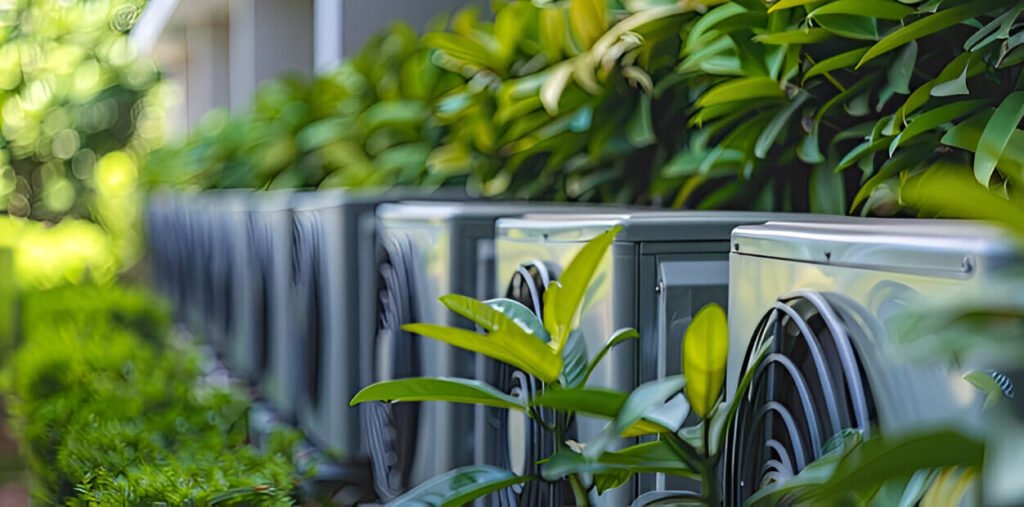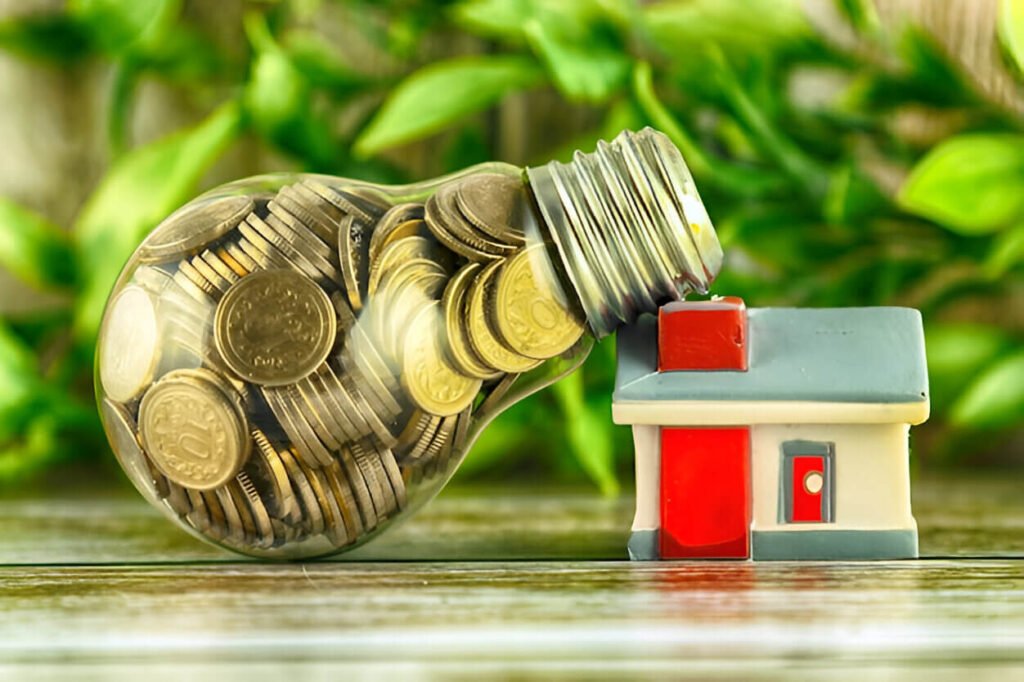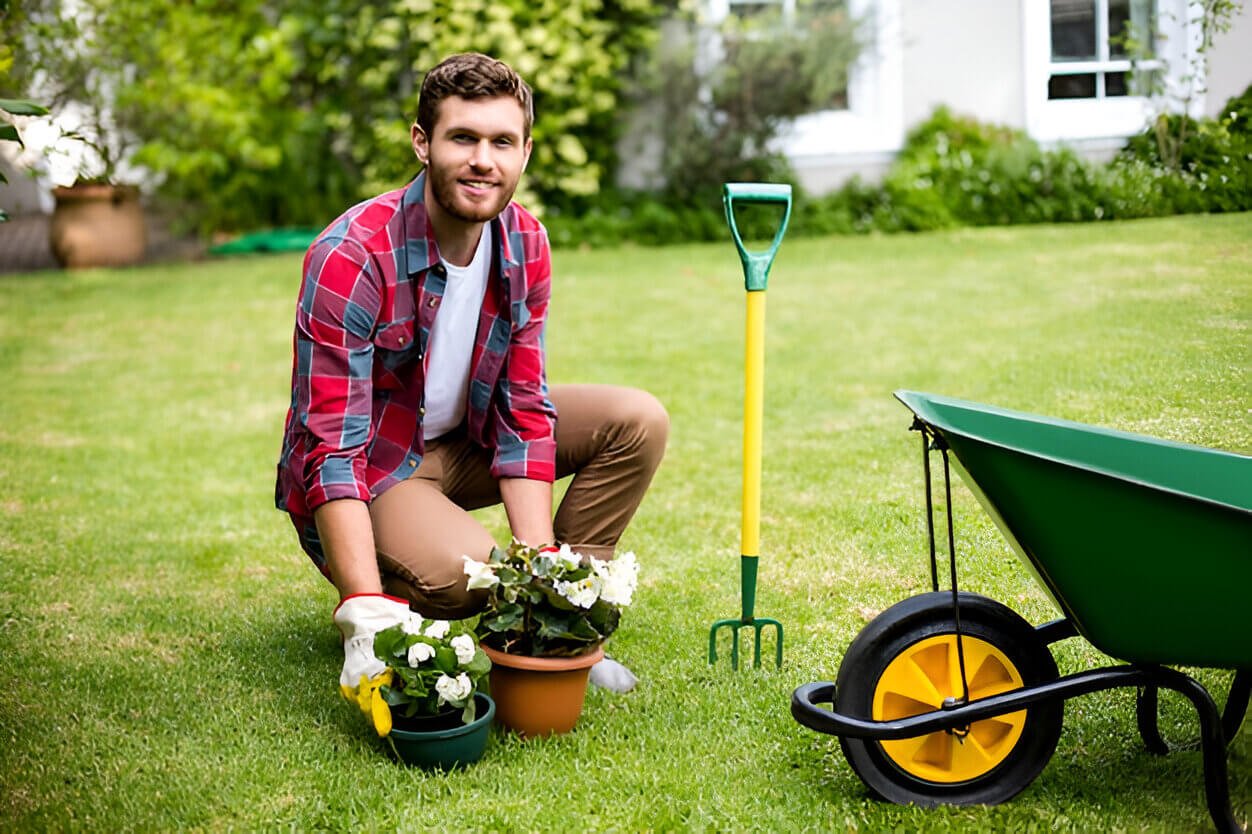Now Reading: Eco-Friendly Home Renovations – A Guide to Sustainability
-
01
Eco-Friendly Home Renovations – A Guide to Sustainability
Eco-Friendly Home Renovations – A Guide to Sustainability

Introduction
In today’s world, where climate change and environmental degradation are pressing concerns, eco-friendly home renovations have become more than just a trend—they are a necessity. Homeowners are increasingly seeking ways to make their living spaces more sustainable, energy-efficient, and environmentally responsible.
By incorporating green building materials, energy-saving solutions, and innovative eco-friendly technologies, you can significantly reduce your home’s carbon footprint while enhancing its functionality and aesthetic appeal.
Whether you’re planning a full-scale renovation or making small, eco-conscious upgrades, embracing sustainability can benefit both your wallet and the planet. Eco-friendly home renovations not only conserve natural resources but also lead to long-term savings through reduced energy and water bills. Additionally, green homes often boast higher resale values, making them a smart investment for the future.
This comprehensive guide explores the most effective eco-friendly home renovation strategies, from energy-efficient appliances and sustainable materials to smart water conservation methods and green certifications. Let’s dive in and discover how you can transform your home into a healthier, greener, and more energy-efficient space.
Why Eco-Friendly Home Renovations Matter
Home renovations significantly impact the environment, and traditional practices often result in excessive energy consumption, material waste, and increased carbon emissions. By adopting eco-friendly renovation practices, homeowners can contribute to environmental preservation while reaping personal and financial benefits.
- Reducing Energy Consumption and Lowering Utility Bills
Energy-efficient upgrades, such as solar panels, energy-efficient windows, and smart thermostats, minimize electricity and fuel usage, leading to lower utility bills and reduced reliance on non-renewable energy sources. According to the U.S. Environmental Protection Agency (EPA), energy-efficient homes can save homeowners up to 30% on energy costs annually. - Improving Indoor Air Quality
Conventional building materials and paints often release harmful toxins, contributing to indoor pollution. Opting for low-VOC paints, sustainable flooring, and non-toxic insulation creates a healthier living environment, reducing the risk of respiratory issues and allergies. - Minimizing Waste and Promoting Recycling
Renovation projects generate substantial waste, much of which ends up in landfills. Using reclaimed wood, recycled metal, and repurposed materials helps reduce waste, conserve resources, and lower environmental impact. For example, reclaimed wood from old barns or factories can be repurposed into stunning flooring or furniture. - Enhancing Home Value with Green Certifications
Eco-friendly homes are increasingly sought after, and certifications like LEED (Leadership in Energy and Environmental Design) and Energy Star ratings boost property value and appeal to sustainability-minded buyers. A study by the National Association of Realtors found that homes with green certifications sell 20% faster than non-certified homes. - Reducing Carbon Footprint and Supporting Sustainability
From energy use to waste management, every aspect of home renovation impacts the environment. By choosing renewable materials, water-efficient fixtures, and sustainable landscaping, homeowners can contribute to a greener planet while fostering long-term sustainability.
Best Eco-Friendly Home Renovations
1. Energy-Efficient Upgrades

Energy efficiency is a cornerstone of eco-friendly home renovations. Here are some of the most effective upgrades:
- Solar Panels: Harness solar energy to reduce reliance on fossil fuels and lower electricity bills. According to the U.S. Department of Energy, solar panels can save homeowners up to $1,500 annually on energy costs.
- Energy-Efficient Windows: Double or triple-pane windows improve insulation, reducing heating and cooling costs by up to 25%.
- Smart Thermostats: Devices like Nest or Ecobee optimize temperature control, cutting energy waste by up to 20%.
2. Sustainable Building Materials

Choosing sustainable materials is key to reducing your home’s environmental impact.
- Reclaimed Wood: Salvaged from old structures, reclaimed wood reduces deforestation and adds character to your home. It’s perfect for flooring, furniture, and accent walls.
- Bamboo Flooring: A fast-growing, renewable resource, bamboo is durable and eco-friendly. It’s also resistant to moisture and pests, making it ideal for kitchens and bathrooms.
- Low-VOC Paints: These paints improve indoor air quality by reducing harmful emissions. They’re available in a wide range of colors and finishes, so you don’t have to compromise on style.
- Recycled Glass Countertops: Made from post-consumer glass, these countertops are stylish and sustainable. They’re heat-resistant, easy to clean, and come in a variety of designs.
3. Water Conservation Solutions

Water conservation is a critical aspect of eco-friendly home renovations.
- Low-Flow Fixtures: Faucets, showerheads, and dual-flush toilets reduce water usage without compromising performance. For example, a low-flow showerhead can save up to 2,700 gallons of water per year.
- Rainwater Harvesting: Collect and store rainwater for irrigation and other non-potable uses. A simple rain barrel can save up to 1,300 gallons of water during the peak summer months.
- Greywater Recycling: Reuse wastewater from sinks and showers for landscaping. This can reduce household water consumption by up to 40%.
4. Green HVAC Solutions

Heating, ventilation, and air conditioning (HVAC) systems account for a significant portion of home energy use.
- Geothermal Heating & Cooling: Utilizes the earth’s stable temperature for efficient climate control. While the upfront cost is high, geothermal systems can reduce energy bills by up to 70%.
- Energy-Efficient HVAC Systems: Upgrading to Energy Star-rated systems reduces energy consumption. Look for systems with high SEER (Seasonal Energy Efficiency Ratio) ratings for maximum efficiency.
- Smart Vents & Zoning Systems: Direct airflow where it’s needed most, minimizing energy waste. These systems can cut HVAC costs by 20-30%.
5. Eco-Friendly Landscaping

Your outdoor space can also contribute to sustainability.
- Native & Drought-Resistant Plants: These require less water and maintenance, supporting local ecosystems. Examples include lavender, succulents, and ornamental grasses.
- Permeable Paving: Allows rainwater to seep into the ground, reducing runoff and erosion. Options include gravel, porous concrete, and permeable pavers.
- Green Roofs & Living Walls: Integrate vegetation into your home for improved insulation and air quality. Green roofs can reduce urban heat island effects and provide habitats for wildlife.
6. Green Certifications & Incentives

Certifications and incentives can make eco-friendly home renovations more accessible.
- LEED Certification: Enhances home value and qualifies you for tax credits. LEED-certified homes are designed to be energy-efficient, water-efficient, and environmentally friendly.
- Energy Star Rebates: Offers rebates for energy-efficient appliances and upgrades. Check with your local utility company for available incentives.
- Net-Zero Home Design: Produces as much energy as it consumes, reducing environmental impact. This is achieved through solar panels, high-performance insulation, and energy-efficient appliances.
7. Budget-Friendly Eco-Renovation Tips

Not all eco-friendly upgrades require a hefty investment.
- LED Lighting: Reduces energy consumption and lasts longer than traditional bulbs. Switching to LEDs can save up to $75 per year on energy bills.
- Natural Fiber Textiles: Opt for organic cotton, wool, and linen for a sustainable home. These materials are biodegradable and free of harmful chemicals.
- Upcycled Furniture: Give old furniture new life instead of sending it to landfills. Refinishing or reupholstering furniture can save money and reduce waste.
- Composting: Turn kitchen waste into nutrient-rich soil for your garden. Composting reduces landfill waste and provides free fertilizer for your plants.
How to Start Your Eco-Friendly Home Renovation Journey

Embarking on eco-friendly home renovations doesn’t have to be overwhelming. Start with these steps:
- Assess Your Home’s Energy Use: Conduct an energy audit to identify areas for improvement. Many utility companies offer free or discounted audits.
- Set a Budget: Determine how much you’re willing to spend and prioritize upgrades with the highest return on investment.
- Research Incentives: Look for government rebates and tax credits for energy-efficient upgrades. For example, the federal solar tax credit covers 30% of solar panel installation costs.
- Work with Green Contractors: Choose contractors experienced in sustainable building practices. Ask for references and certifications to ensure they meet your eco-friendly goals.
Conclusion
Eco-friendly home renovations are a commitment to a sustainable lifestyle that benefits both homeowners and the environment. By incorporating energy-efficient upgrades, sustainable materials, water conservation systems, and green landscaping, you can significantly reduce your carbon footprint while enhancing your home’s comfort, efficiency, and value.
By taking these steps, you can create a greener, healthier home while contributing to a more sustainable future. Let’s work together to make sustainability a part of everyday living—one home at a time!
For more tips on sustainable living and eco-friendly home improvements, visit EcoUrbanBloom and explore our blog post on Sustainable Urban Living.
FAQs (Frequently Asked Questions)
What are the most affordable eco-friendly home renovations?
- Switching to LED lighting, using low-VOC paints, installing low-flow fixtures, and weatherstripping are cost-effective ways to make your home more sustainable.
How can I make my home more sustainable without major renovations?
- Use energy-efficient appliances, add indoor plants, compost kitchen waste, and opt for reusable products to reduce your environmental impact.
What are the best eco-friendly materials for home renovations?
- Reclaimed wood, bamboo flooring, recycled glass countertops, and low-VOC paints are excellent choices for sustainable renovations.







